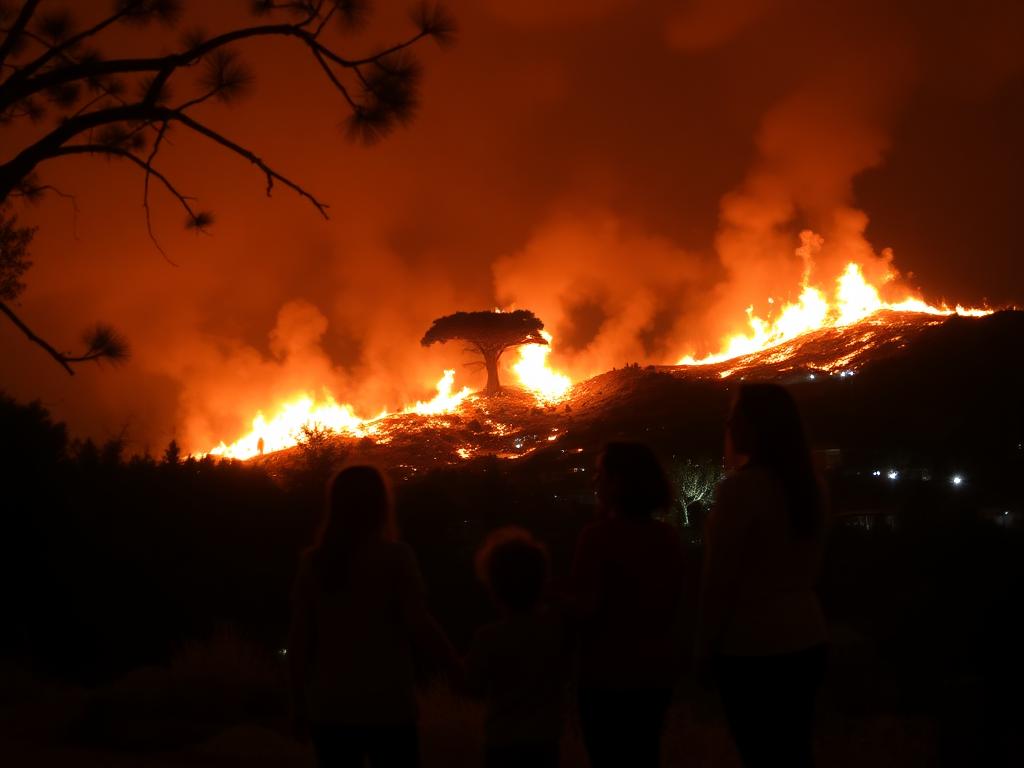With much of southern California under a red flag warning due to strong winds and low humidity, the Pacific Palisades, one of the affluent residential neighborhoods of Los Angeles, caught fire Tuesday morning and swiftly grew to a nearly 3,000-acre blaze. This is the first significant wildfire threat for southern California this week.
The California Department of Forestry and Fire Protection issued evacuation orders for residents of the Palisades and those residing along a portion of the Pacific Coast Highway, stating that the Palisades Fire started at approximately 11 a.m. local time and had burned over 2,900 acres at approximately 11 p.m. PST.
Cal Fire reported no fire containment as of around 5 p.m., prompting the Los Angeles Fire Department to issue evacuation orders for over 30,000 residences in the Palisades and surrounding regions.
Live Update:
- What Is The Current Status Of The Pacific Palisades Fire?
- How Can Residents Stay Safe During The Pacific Palisades Fire?
- What Are The Current Evacuation Routes For People Near The Palisades Fire Today?
- Are There Any Details On The Origin Of Today's Palisades Fire?
Exploring the Palisades Fire: Causes and Consequences 2025

"This is a highly dangerous windstorm creating extreme fire risk, and we're not out of the woods," California Governor Gavin Newsom warned, urging locals to follow the evacuation order and declaring a state of emergency.
Southern California is under a red flag warning (warm temperatures, strong winds, and low humidity) from Tuesday through Wednesday in the counties of Santa Barbara, Los Angeles, and Ventura, and from Tuesday through Thursday in the counties of San Bernadino, Orange, Riverside, and San Diego, according to the National Weather Service.
Downed trees and power lines could result in "widespread power outages," according to the NWS, which also predicts wind gusts of 50 to 80 mph in certain areas of southern California and up to 100 mph in the foothills and mountains through Wednesday night.
The San Fernando Valley, a densely populated region north of the Hollywood Hills, has experienced sporadic power outages. As of 5 p.m. PST, the Los Angeles Department of Water and Power reported that several thousand customers were without power.
Have Lax Flights Been Affected by the Fire?

As of Tuesday afternoon, there have been no notable aircraft cancellations or delays at Los Angeles International Airport, which is located around 19 miles south of the Pacific Palisades, according to FlightAware.
Where in Southern California Could Fires Start?
Much of southern California is expected to experience elevated to critical fire weather on Tuesday, according to the National Weather Service's fire prediction. On Wednesday, the urgent fire weather alert's area of coverage would increase by 278 square miles, reaching 5,035 square miles overall. Additionally, from Wednesday through Thursday, the NWS issued an extreme fire weather advisory, which is its highest classification for fire potential, for a 1,463-square-mile area that includes places like Santa Clarita, Simi Valley, Altadena, Moorpark, and Santa Paula.
Important Background

Prime fire conditions in southern California have probably been influenced by the emergence of weather patterns suggestive of La Niña, a climatic phenomena associated with drought and drier conditions in southern regions of the United States. In addition to a dry winter, Los Angeles in particular has had a lackluster amount of rain during the past eight months. The Los Angeles Times reports that the city has not had more than a tenth of an inch of precipitation since May of last year, which has contributed to the drought. The primary causes of Tuesday's flames are a combination of dry weather and high winds, which also fueled a different fire in the Pacific Palisades in 2021 that destroyed over 1,200 acres.
 Rajesh Kumar
Rajesh Kumar
No comments